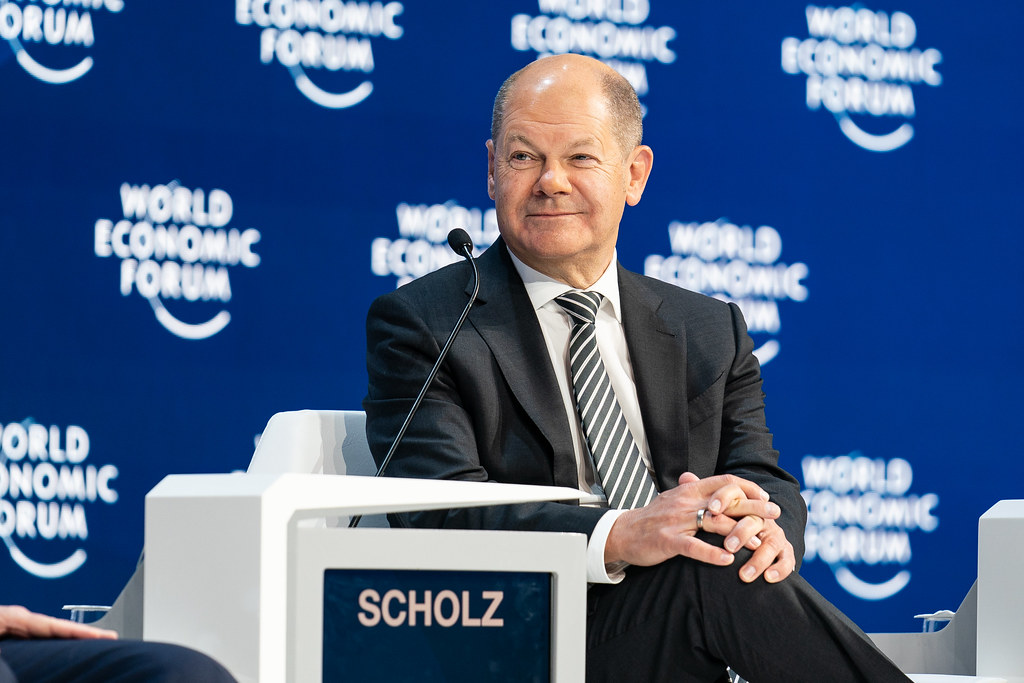How Germany and Holland will arm Ukraine

Because Germany's decision to supply Ukraine with self-propelled artillery is (really) important. All the details in the in-depth analysis by Giovanni Martinelli
The news had been in the air for days. Yet, although precisely anticipated by various media outlets, the fact that he had not yet found official confirmation had ended up fueling doubts; to dispel which in the end it was the German Defense Minister herself who finally announced a doubly important decision.
Berlin will in fact supply Ukraine with 7 PzH 2000 self-propelled artillery units ( Panzerhaubitze 2000 ) to Ukraine, all as part of a joint program with the Netherlands which will make 5 more available. this type that will be sent to the country targeted by Russia's aggression.
First, however, and also in Germany, a training course will be launched for the personnel of the Ukrainian Armed Forces who will be called upon to use self-propelled vehicles. In the meantime, both the German and the Dutch vehicles will undergo a series of works necessary to bring them back to perfect efficiency. In fact, as regards those supplied by Berlin, they will be self-propelled units taken from that rate currently not in service as they are awaiting repairs. While for the Dutch ones, these are those placed in reserve for some time.
It is therefore difficult to hypothesize on the possible deployment in Ukraine, because between training (of a complex and sophisticated system anyway), putting the means in efficiency and possible adaptations to the needs of the Kiev Forces, we are talking about several weeks before these can be predictably employees in action.
As we said, the German decision is significant for 2 reasons. The first is of a more operational nature. The one in question is in fact one of the most modern and capable self-propelled machines in its category; of its own German production (more precisely, from the Krauss-Maffei Wegmann and Rheinmetall consortium) it has been adopted by 8 different countries, including ours (which could also have a role in the German-Dutch operation).
With a combat weight of over 55 tons, the PzH 2000 has a 155mm artillery piece and a whopping 60 rounds on board. Another important feature is the firing rate of 10 shots per minute; although 3 rounds can be fired in 9 seconds. This means that, thanks to its mobility qualities, a PzH 2000 can be positioned, fired several shots and moved again (not to be hit in turn) in a matter of minutes. Depending on the shells used, ranges between 30 and over 45 km can also be achieved.
It should also be pointed out that precisely the sector of what in technical terms is defined as “long range fires”, that is artillery systems and rocket launchers, is the one of greatest attention in the context of current military supplies to Kiev. On the one hand, with Eastern European countries that are providing them with characteristics that are easily usable by the Ukrainian forces, as they are already in use.
On the other hand, however, others of Western origin, decidedly more modern, are also flowing in, such as the 100 artillery pieces always towed by 155 mm of the M777 type (90 from the USA, 6 from Australia and 4 from Canada); this while in the short term there could be the supply of 12 self-propelled Caesar self-propelled vehicles from France, still 155 mm and, perhaps, also other self-propelled ones (albeit less recent) from other NATO countries.
An interesting development, because this not only increases the capabilities of the Kiev forces but, more so, because this could also lead to the use of precision guided ammunition. Which, evidently, would represent a significant increase in their warfare capabilities.
The second relevant aspect is of a more "political" nature. Since the phases immediately preceding the start of the conflict and then in the subsequent ones, Berlin has often ended up at the center of controversy due to its excessive hesitation precisely on the front of military aid to Ukraine; in part also founded.
However, what has happened in the last 2 weeks marks a turning point. First the authorization for the supply of 50 Gepard self-propelled anti-aircraft vehicles and now that of 7 PzH 2000; of course, it may be objected that other countries have done (sometimes much) more. For Berlin, however, due to its traditional positions and its history over the last few decades, the leap in quality is (evidently) even “enormous”.
In this sense, what is happening in Germany becomes almost a lesson for our country, increasingly lingering in a debate between the grotesque and the surreal, sterile locked up in a banal discussion between "heavy / offensive weapons and light / defensive weapons" . In short, if now Berlin also surpasses us (definitely) in terms of quantity and quality of the effort in terms of military aid to Ukraine, then it really means that …
This is a machine translation from Italian language of a post published on Start Magazine at the URL https://www.startmag.it/mondo/come-germania-e-olanda-armeranno-lucraina/ on Sat, 07 May 2022 07:10:45 +0000.
